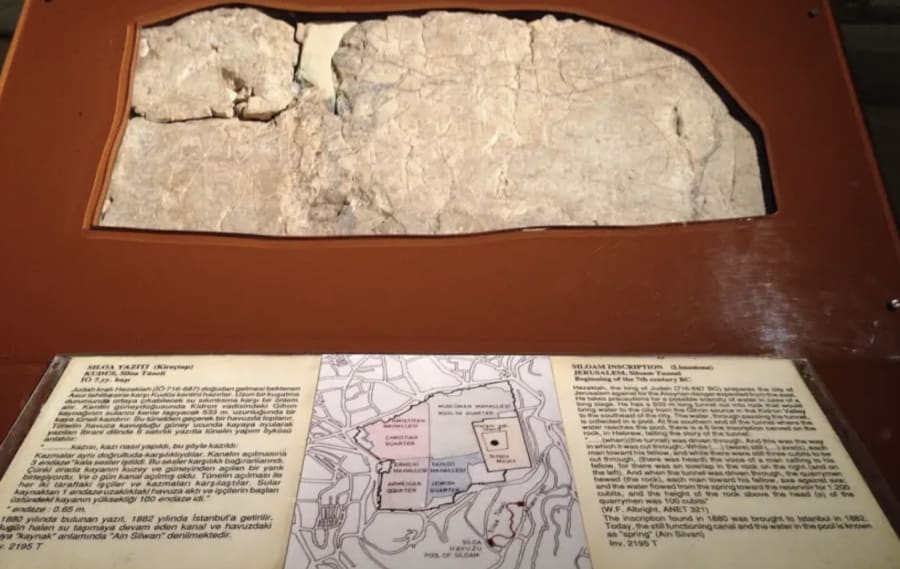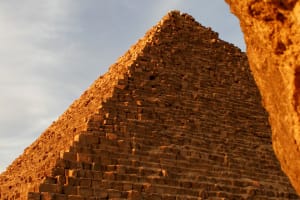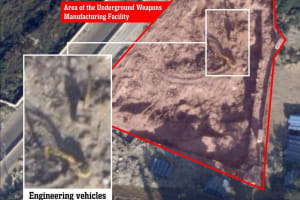Inscriptions confirm biblical account of King Hezekiah
Inscriptions recently deciphered mention Hezekiah’s name and list some of his greatest accomplishments

After years of research, Israeli archaeologists have deciphered inscriptions on stone tablets found in Jerusalem that support the existence of the 8th century B.C. biblical King Hezekiah.
The inscriptions mention Hezekiah’s name and list some of his greatest accomplishments, including the construction of pools and tunnels and the conquest of Philistia. Parts of the inscriptions can be found today inside the Siloam Tunnel, in the City of David in Jerusalem, where they have been since they were made there 2,731 years ago.
Prof. Gershon Galil, the head of Haifa University’s Institute for Biblical Studies and Ancient History, deciphered the inscriptions with archaeologist Eli Shukron. He said the inscriptions have changed how archaeologists see the biblical kings.
“This is an extremely important discovery that changes [some basic assumptions of] research, since until today it was commonly accepted that the kings of Israel and Judah, unlike the kings of the ancient Middle East, did not make themselves royal inscriptions and monuments … to commemorate their achievements,” Galil said.
“The Israeli kings were indeed mentioned in extra-biblical Assyrian, Babylonian, Aramaic, Moabite inscriptions as well as on Hebrew seal impressions, but this is the first time that a fragment of a monumental Hebrew royal inscription has been deciphered that mentions the name of the king whose achievements were detailed in it,” he said.
More significantly, the newly deciphered inscriptions strengthen researchers’ belief that the Bible is a reliable source that reflects historical facts.
“The discovery strengthens the approach of researchers who emphasize the reliability of the Bible, since it teaches that right in front of the eyes of the Bible’s authors stood monuments with royal inscriptions … [engraved at the very] time of the kings mentioned in the Bible,” Galil said.
Galil noted that the new inscriptions provide answers to contentious issues that went unanswered for years.
“In these new inscriptions, there are answers to many issues that scholars have debated for years. The inscriptions are evidence that Hezekiah carried out a comprehensive reform [before 709 B.C.] and even that he conquered Philistia, especially Ekron, and stationed soldiers there [in 712 B.C.], as I argued before, and as pointed out in the ‘Azekah inscription.’ Moreover, Hezekiah is indeed the king who built the pool and the Siloam Tunnel and not others,” Galil said.
According to Shukron, “Hezekiah’s inscription also supports the assumption that additional inscriptions from Jerusalem were composed in Hezekiah’s time by the same scribes.”
Some of these inscriptions can be found in the City of David National Park, he said.
The inscriptions are not the first evidence of Hezekiah that have been found. In 2015, archaeologists discovered a seal inscribed with Hezekiah’s name in Jerusalem. In 2017, more archaeological material was found relating to his reign.
Archaeologists digging at the Tel Lachish National Park, southwest of Jerusalem, found an ancient altar dated to Hezekiah’s time. The ancient city of Lachish is mentioned at least two dozen times in the Bible. It was destroyed by the Assyrians around 700 B.C.
Israeli Minister of Jerusalem Affairs and Heritage and Minister of Environmental Protection Ze’ev Elkin stressed the importance of the findings, as they relate to the Bible.
“Before our very eyes, these new finds become the biblical verses themselves and speak in their voice,” the minister said.
The inscriptions are scheduled to be published next year in both Hebrew and English in a book about their discoveries titled The Inscriptions of Hezekiah King of Judah, written by Galil and Shukron. The book will contain photographs of the inscriptions and detailed discussion about their linguistic, historical and paleographical implications.

The All Israel News Staff is a team of journalists in Israel.














